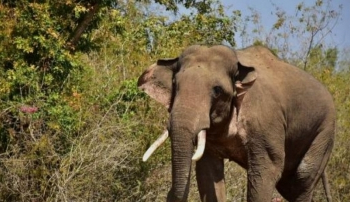New Delhi: Even as reports emerge of a Mumbai-based Bollywood costume designer becoming India’s first person to test positive for the new Covid XE variant, here are a few things to know about the variant.
The World Health Organisation (WHO) had last week issued a warning against a new mutant that may be more transmissible than any strain of Covid-19 seen before.
‘XE’ is a mutant hybrid of the two previous versions of the Omicron variant, BA.1 and BA.2, which spread across the world. It was first detected from the UK on January 19 and since then a few hundred sequences have been reported and confirmed.
According to the WHO, XE has a community growth rate advantage of about 10 per cent as compared to BA.2 subvariant, which is already the most contagious.
While XE only accounts for a small fraction of the cases, its extremely high transmissibility could mean that it becomes the most dominant strain in the near future.
“The XE recombinant (BA.1-BA.2), was first detected in the UK on January 19 and less than 600 sequences have been reported and confirmed since,” said the recent WHO report.
“Early-day estimates indicate a community growth rate advantage of 10 per cent as compared to BA.2, however, this finding requires further confirmation,” it added.
According to the UK Health Security Agency, XE comes with symptoms such as running noses, sneezing and sore throats, as opposed to the original strain of the virus which generally led to fever, coughs and a loss of taste or smell.
And the NHS added shortness of breath, feeling tired or exhausted, an aching body, a headache, a sore throat, a blocked or runny nose, loss of appetite, diarrhoea, feeling sick or being sick.
The agency stated that as of March 22, 637 cases of XE had been detected in England.
The XE variant has also been detected in Thailand and New Zealand. The WHO has said further data is required before more can be said about the mutation.
According to Susan Hopkins, chief medical adviser for UKHSA, more data is needed to confirm whether XE has a “true growth advantage”, as it has shown a “variable growth rate” so far over the time it has been monitored, Forbes reported.
There is also insufficient evidence to draw any conclusion on transmissibility, severity or vaccine effectiveness, Hopkins added.
(IANS)



















